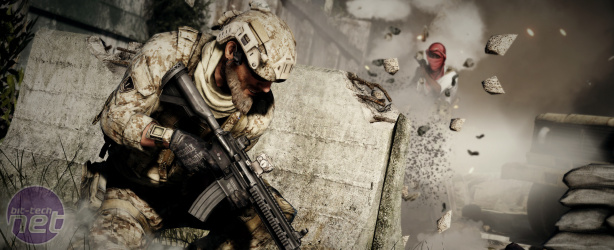
Medal of Honor: Warfighter Preview
Platform: PC, Xbox 360, PS3Publisher: Electronic Arts
Release Date: October 26, 2012
Expectations are important. Just yesterday I went to an independent theatre production and, when it turned out not to be as terrible as I expected, I ended up having a lot of fun. 'Not terrible' isn't exactly a ringing endorsement though, which begs the question of whether it was actually a good show or just not as bad as I expected it to be...
So, Medal of Honor: Warfighter. After my reaction to [eurl= http://www.bit-tech.net/gaming/pc/2012/06/25/call-of-duty-black-ops-2-preview/1]Call of Duty: Black Ops 2[/eurl] earlier this year it probably won't surprise you to say that I don't have particularly high expectations for games of this ilk. For all the talk of Tier-1 Operators and national pride, Medal of Honor: Warfighter had previously seemed to boil down to a manshooter like any other.
But after going hands on with some of the new multiplayer modes, you know what? It's not as terrible as I expected. One of the new modes in particular, Home Run, is actually plainly enjoyable.
Medal of Honor: Warfighter
To put it simply Home Run - which was named by the community after a competition - works because it doesn't get too big for its boots. It's not a mode surrounded in hyperbole about fire teams or class combos; it's just straightforward action with a competitive twist. Most rounds I played didn't even last more than two or three minutes
The setup is simple. Two teams, two flags and one base. The attacking team has to get either flag and bring it back to their base to score. The other team just has to stop them. It's basic, but sometimes no-nonsense is just what you need.
What makes Home Run stand out though is the level design, which mirrors the overall rule set in the 'small but effective' attitude. The first map I played on, for example, was so small that you could probably sprint across it in just twenty seconds or so if you avoided the side avenues where the flags were kept and ran down the central path. Doing so was only really an option for the defending team however, who could use it to get behind attackers and kill them on their way back to base.
While the central path was fairly open though, the side paths were littered with obstacles and obstructions - hole-pocked walls and lumps of debris for attackers for either side to cover behind. We noticed that while one flag was usually kept in a interior location too, the other was generally a bit more open - meaning no individual class is disadvantaged. A sniper can be as effective as a demo-man.
At the same time as providing subtle incentives for some classes to approach the game in certain ways though, part of what makes Home Run work is that planning is pretty much impossible. There's a tactical element to consider - will you charge straight in or try to hang back? - but any attempt to approach it will instantly dissolve. Within seconds of starting to play everyone will have run off in different direction and you'll be hearing shots in the distance.
You could always try to plan it a bit better next time, of course - but with matches generally resolving in lightning time there's little hope of getting a cohesive strategy worked out on the fly. So, it becomes blisteringly fast combat consistently marked by recklessness and hope, luck and magic.

MSI MPG Velox 100R Chassis Review
October 14 2021 | 15:04










Want to comment? Please log in.